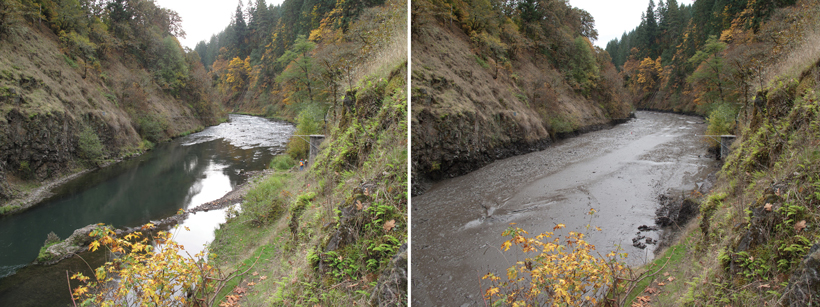On 26 October 2011, engineers blew a hole in the base of Washington state’s Condit Dam, loosing nearly a million cubic meters of water in an instant. The surge of water, sand, and mud marked the end of the 38-meter-tall concrete dam that had blocked the White Salmon River for nearly 100 years and the beginning of a rapid transformation of the downstream environment. Using river gauge measurements, time-lapse photography, and other techniques, Wilcox et al. tracked how the White Salmon River evolved in the wake of the breach.
Most dam removals have been of small dams or large dams that were drained slowly over months. The breach of the Condit Dam, by comparison, was one of the biggest and most dramatic ever conducted. Removing Condit Dam enabled fish passage up the White Salmon River.
Before it was breached, the Condit Dam had held back 1.6 million cubic meters of water, nearly all of which raced out of the dam within the first 1.5 hours. At a downstream gauge station the authors found that the river flow jumped from just a few cubic meters per second to 421 cubic meters per second.
In addition to water, the dam had also held back 1.8 million cubic meters of gravel, sand, and mud. At the gauge station a surge of sediment-laden flow—up to 30% by volume—followed in the hours after the initial pulse of water as the stored reservoir sediment rapidly slumped into the incising channel. In the following weeks, mud, sand, and gravel continued to erode from the former reservoir, transforming much of the downstream channel from a rocky and bouldery bed to a gravel bottom with flanking sand and gravel bars. (Journal of Geophysical Research: Earth Surface, doi:10.1002/2013JF003073, 2014)
—Colin Schultz, Writer
© 2014. American Geophysical Union. All rights reserved.
© 2014. American Geophysical Union. All rights reserved.

